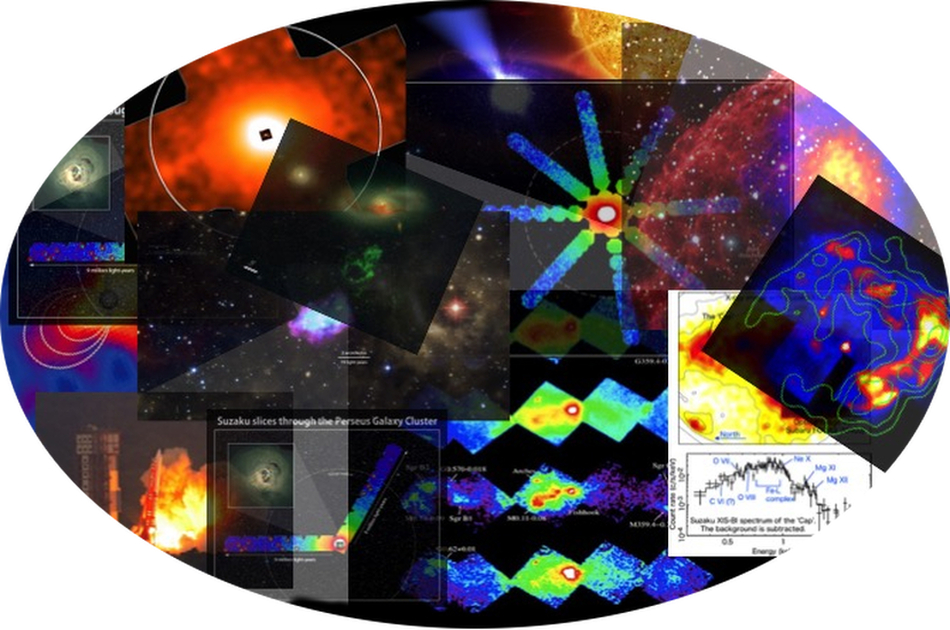
 Credit: NASA; JAXA; ISAS
Credit: NASA; JAXA; ISAS
The Vermillion Bird
July 10 marks the tenth anniversary of the launch of the Japanese-US X-ray observatory, Suzaku. Suzaku provides astronomers with powerful instruments to probe the X-ray sky in the broad energy range of 0.2 - 600 keV. Suzaku was named for the vermillion bird of Chinese mythology which guards the southern part of the sky (where the Virgo Cluster of galaxies resides). Over the past ten years, and despite the loss of its premiere instrument (an X-ray spectrometer called the XRS which used a cryogenic technology to provide unprecedented X-ray spectra resolution) Suzaku has made important contributions to our understanding of how the Universe works. Suzaku highlights include studies of the chemical composition of the hot gas in clusters of galaxies; discovery of strange pulsations in a white dwarf binary system; examination of the high-energy radiation from the center of the Milky Way; placing important constraints on the epoch of iron production; and identifying the mysterious Voorwerp lurking in intergalactic space. Since June 1, communications with the spacecraft have become intermittent, and Suzaku now appears to be reaching the end of its cosmic journey. But Suzaku's data archive provides a treasure trove for astronomical discovery far into the future, and astronomers are awaiting the opening of a new chapter in X-ray astronomy with the upcoming launch of the Astro-H mission.
Published: July 6, 2015
<
HEA Dictionary ● Archive
● Search HEAPOW
● Other Languages
● HEAPOW on Facebook
● Download all Images
● Education ● HEAD
>

Each week the HEASARC
brings you new, exciting and beautiful images from X-ray and Gamma ray
astronomy. Check back each week and be sure to check out the HEAPOW archive!
Page Author: Dr. Michael F. Corcoran
Last modified Tuesday, 27-Feb-2024 10:13:31 EST


